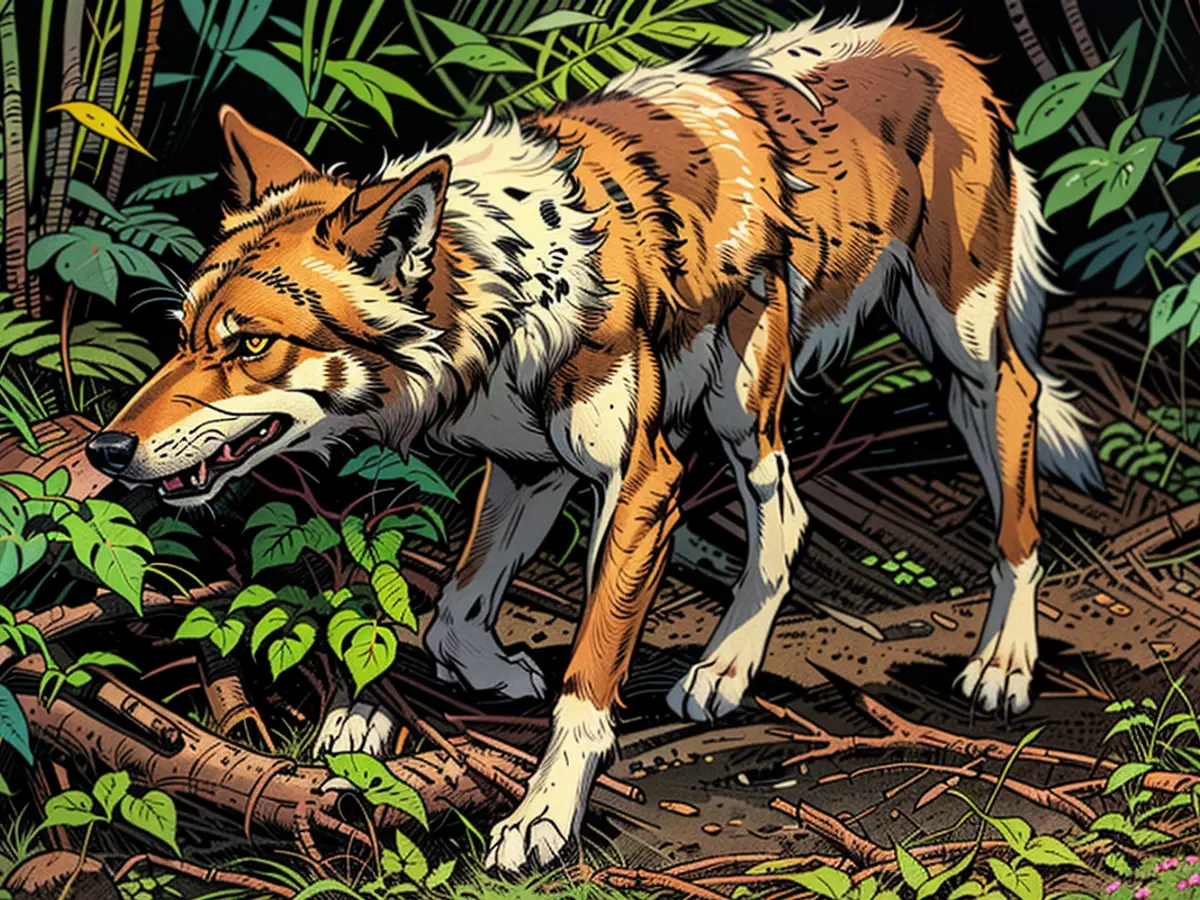The number of dead wolves is increasing sharply
Wolves return after 150 years to Germany. The strictly protected species is spreading throughout Germany. By May, every dead animal is examined on the dissection table. However, this is no longer feasible, reports the responsible institution.
The number of dead wolves found is now so large that only every second one can be examined in detail. Until early May, every dead find landed in the CT scanner and on the dissection table, explains the Leibniz Institute for Zoo and Wildlife Research (Leibniz-IZW) in Berlin. However, this is no longer feasible with over a hundred dead wolves per year.
Recently, the 1000th dead wolf was examined in the institute. About three quarters of these wolves died in traffic accidents. Every tenth one was illegally shot, although wolves are strictly protected in Germany and cannot be hunted. Since 1990, 17 wolves have been legally killed.
The 1000th animal was a she-wolf, who was pregnant with six cubs. This symbolizes the successful breeding of the animals, explained Heribert Hofer, Director of the Leibniz-IZW.
Living together as a challenge
For almost a quarter of a century, wolf cubs have been born in Germany again. Coexistence brings challenges – for humans and animals. In the latest wolf monitoring, over 1339 wolves were detected in Germany, distributed over almost all federal states, with foci in Saxony, Brandenburg, Saxony-Anhalt, Mecklenburg-Vorpommern and Lower Saxony. The dead finds also come from various parts of Germany.
Frequently, it was cubs – at least 550 cases. 838 wolves died as a result of traffic impact, 95 were illegally killed, 17 were killed legally as part of management, 90 wolves died of natural causes, and in 52 cases the cause was unclear.
Marie Neuwald, spokeswoman for wolves at the Nature Conservation Union NABU, notes that traffic is indeed a danger, but it does not significantly restrict the wolf population. There are indeed other causes of death, but they do not appear so frequently in the mortality monitoring. "The wolves that die from other causes such as diseases and fights with other wolves are rarely found, as they do not lie down on a forest path to die."
"Our data show that about three quarters of the dead wolves die in traffic collisions - mostly with cars on country roads or motorways", says the responsible pathologist Claudia Szentiks. Young wolves, who leave their parent pack and search for a new territory, are often victims of traffic accidents.
- The increase in wolf population in Germany can be attributed in part to the advancements in 'education' and 'science', which have improved our understanding of these animals' needs and habits.
- Despite the 'Species Protection' laws in place, illegal hunting of wolves remains a concern, as shown by the fact that one in ten dead wolves found was illegally killed.
- The growing number of wolf 'Animal Protection' organizations in Germany is essential in raising awareness about the importance of preserving this species and promoting peaceful coexistence between wolves and humans.
- The Leibniz Institute for Zoo and Wildlife Research in Berlin is a leading institution in the field of 'knowledge' acquisition about wolves, with a focus on examining dead wolves to understand the causes of their deaths.







